Sun protection – a topic that affects our skin and health, but is unfortunately often underestimated. Because sun protection is not just a beauty trend, but essential protection for our largest organ.
 The sun emits not only heat but also ultraviolet (UV) rays, which we cannot see or perceive with our other senses. UV radiation is carcinogenic and has negative health effects on our skin and eyes. These can manifest immediately, in the form of sunburn, eye inflammation, and allergic reactions, or they can have long-term consequences. Among the most serious long-term effects are various skin cancers. The number of skin cancer cases in Germany has more than doubled since 2000, meaning it is steadily increasing. In addition to skin cancer, UV radiation can also lead to cataracts or other eye diseases in the long term and cause premature skin aging. This manifests not only as wrinkles but also as slowed wound healing. To avoid skin damage from UV radiation, one should avoid strong UV radiation and dress appropriately. Exposed skin should be protected with sunscreen. be protected .
The sun emits not only heat but also ultraviolet (UV) rays, which we cannot see or perceive with our other senses. UV radiation is carcinogenic and has negative health effects on our skin and eyes. These can manifest immediately, in the form of sunburn, eye inflammation, and allergic reactions, or they can have long-term consequences. Among the most serious long-term effects are various skin cancers. The number of skin cancer cases in Germany has more than doubled since 2000, meaning it is steadily increasing. In addition to skin cancer, UV radiation can also lead to cataracts or other eye diseases in the long term and cause premature skin aging. This manifests not only as wrinkles but also as slowed wound healing. To avoid skin damage from UV radiation, one should avoid strong UV radiation and dress appropriately. Exposed skin should be protected with sunscreen. be protected .
Today we're talking about sun protection, more specifically the two most common UV filters: the organic or chemical filter and the inorganic filter, which is better known as mineral.
What is a mineral sunscreen?
Mineral sunscreens are entirely of natural origin , consisting of minerals such as titanium dioxide and zinc oxide. They form a protective film on the skin that reflects and scatters UV rays, much like a mirror. Mineral filters are effective immediately after application and do not interfere with the body's natural vitamin D production. They are also well-tolerated by children's and sensitive skin.
With higher sun protection factors, a white film often appears on the skin after application. Some brands of natural cosmetic sunscreens address this problem by reducing the minerals to nanoscale. This makes the creams easier to apply, provides high UV protection, and leaves no white residue. The problem: Due to their tiny size, they are not entirely without controversy. There is suspicion that they can penetrate the skin and subsequently enter the body. Their effects on the body have not yet been sufficiently researched. However, studies have shown that inhaling nano-titanium oxide can lead to pneumonia. Therefore, sunscreen sprays containing nano-titanium oxide are particularly concerning, as spraying increases the likelihood of inhaling the mineral in its nanoscale form rather than in its cream-like state. Unfortunately, the impact of nanoparticles on the environment is not yet fully understood. However, zinc oxide nanoparticles are believed to damage and bleach coral reefs through zinc ion formation and physical damage upon direct contact. To limit radical formation, the nanoparticles are often coated with silicon oxide, magnesium or aluminum, but this does not help against coral damage upon direct contact.
Larger particles of zinc and titanium oxide, however, are largely environmentally and skin-neutral UV filters . Therefore, our mineral organic sunscreens do not contain nanoparticles .
What is a chemical sunscreen?
Chemical sunscreens are synthetic and must penetrate the epidermis – the outermost layers of our skin – to be effective. Our skin is then protected from UV damage by absorbing UV rays and converting them into (harmless) heat. This is why the protective effect only kicks in 15-30 minutes after application . A combination of several synthetic active ingredients is necessary to cover the entire UV spectrum.
Some chemical filters, especially benzophenone-3 or EHMC (ethylhexyl methoxycinnamate), are endocrine-disrupting chemicals (EDCs), meaning they can trigger biochemical reactions in various parts of the human body. For example, a 2016 Danish study showed that some chemical UV filters have negative effects on human sperm because they act similarly to the hormone progesterone. Furthermore, some chemical agents are suspected of being carcinogenic . Unfortunately, the overall potential harm of these chemicals once they enter the body has not yet been sufficiently researched.
In early 2021, the US state of Hawaii banned sunscreens containing the chemical filters octinoxate and oxybenzone to protect the ocean . While these substances are still permitted in Germany, an increasing number of sunscreen manufacturers are advertising "reef-friendly" sunscreens that no longer contain these two chemicals.
However, other chemical UV filters also have a negative impact on the environment – especially underwater: A study by the US National Oceanic and Atmospheric Administration has found that numerous chemicals from sunscreens harm the underwater world . These chemicals promote the bleaching and even death of corals, infertility in fish, and impairment of the growth and photosynthetic capacity of green algae . They also affect the hormonal balance of numerous marine animals, the consequences of which are still unclear.
Advantages of chemical sunscreens
Broad protection: Some chemical filters offer broad protection against both types of UV rays: UVA and UVB.
Easier application: Because of their usually liquid consistency, chemical sunscreens are easier to spread on the skin. Therefore, smaller amounts are needed to protect larger areas. Furthermore, a chemical filter does not leave a white film on the skin.
Advantages of mineral sunscreens
Immediate effect, no waiting required: Mineral sunscreens protect your skin immediately after application, so there's no need for a 30-minute absorption period. This is because mineral sunscreens form a layer on the skin and don't need to be absorbed, making them perfect for spontaneous outdoor activities.
 Safety for sensitive skin: A mineral filter does not penetrate, or only very minimally, the uppermost layers of the skin and forms a protective film on the surface. This often makes them less irritating. Generally, mineral components are hardly allergenic. Therefore, mineral sunscreens are also suitable for children and people with sensitive skin or skin conditions such as rosacea or eczema.
Safety for sensitive skin: A mineral filter does not penetrate, or only very minimally, the uppermost layers of the skin and forms a protective film on the surface. This often makes them less irritating. Generally, mineral components are hardly allergenic. Therefore, mineral sunscreens are also suitable for children and people with sensitive skin or skin conditions such as rosacea or eczema.
Long lifespan: Mineral filters do not tend to degrade under sunlight or other environmental conditions, often remain stable for longer and retain their protective effect over a longer period.
100% natural: Mineral sunscreens consist entirely of natural ingredients and contain no chemicals. Therefore, they are generally more suitable for your health and the environment, especially certified organic mineral sunscreens. Sunscreen with mineral filters is expressly recommended for babies, toddlers, pregnant women, and breastfeeding mothers.
Our conclusion:
We want to care for our skin as sustainably as possible. For us, this means we don't want to use creams or lotions containing chemicals or other substances that are proven to harm our bodies and whose full effects on our bodies are not yet completely understood. It also means that we don't want to harm the environment by protecting our skin, especially when numerous independent studies indicate otherwise. That's why we use the mineral filters titanium dioxide and zinc oxide in our sunscreen , whose combination offers strong protection against UVA and UVB radiation. Both minerals are used in our product in non-nano sizes, for the benefit of both the environment and our bodies. This makes our Naseweiss the perfect choice for sun protection – even for children and people with very sensitive skin or skin conditions such as eczema or rosacea.
It is available with SPF 50 in a nose-white design and in cooperation with Maya the Bee, as well as with SPF 30 in a vegan version .
Overview: Advantages and disadvantages of chemical and mineral UV filters
Mineral filters
|
Advantages |
Disadvantages |
| Immediate effect | Whitening effect |
| Suitable for sensitive skin, (young) children and skin conditions such as rosacea or eczema. | The nanoparticles in mineral filters are controversial because nano-zinc oxide has been proven to damage corals, and nano-titanium oxide can cause pneumonia when inhaled. Further effects on the body and the environment have not yet been sufficiently researched. (Important: This only applies to nano-sized minerals!) |
| Long shelf life | |
| Only natural ingredients, no chemicals whatsoever. |
Chemical filters
|
Advantages |
Disadvantages |
| Broad protection against UVA and UVB radiation | Some chemical UV filters have endocrine-disrupting effects . disrupting chemicals ) |
| Easy application | Some chemical UV filters are considered carcinogenic. |
| The general potential for damage to the body has not yet been sufficiently researched. | |
| Environmental damage: - Coral bleaching and death - Infertility in fish - Negative effects on green algae growth and their photosynthetic performance - Effect on the hormone balance of marine animals |



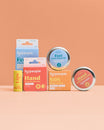

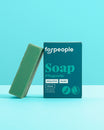


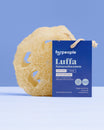
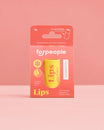
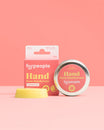
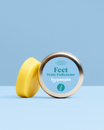


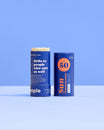
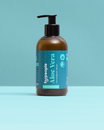


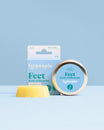

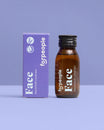






Leave a comment
This site is protected by hCaptcha and the hCaptcha Privacy Policy and Terms of Service apply.